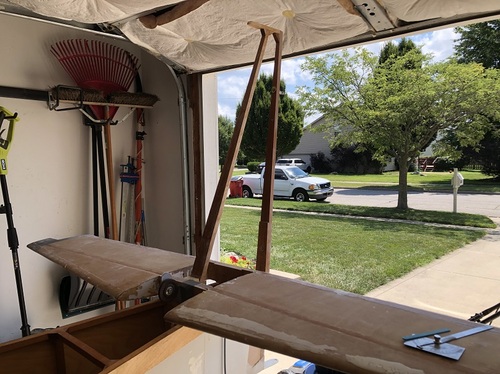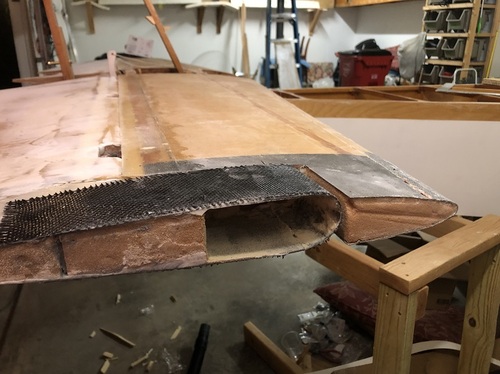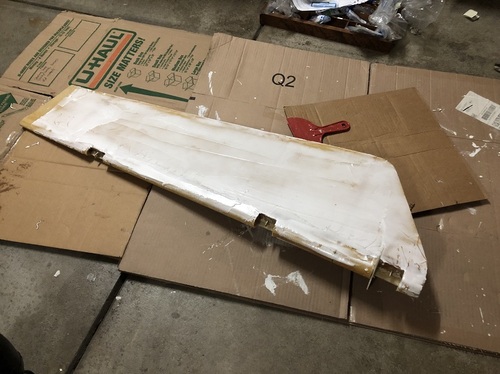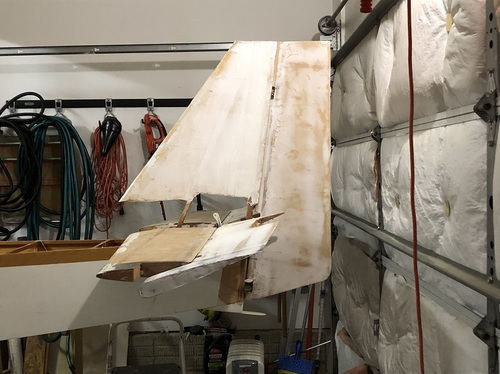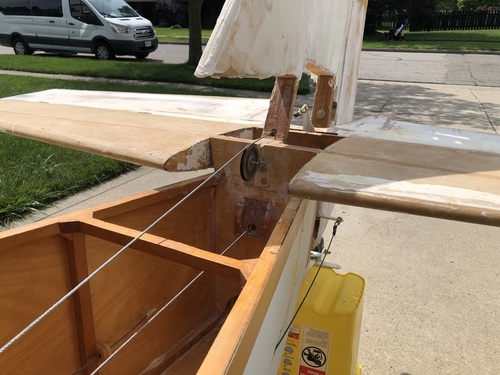Tail 2
Tail page 2
Below, the horizontal stabilizer has been epoxied onto the fuselage, along with the vertical fin wood pieces. I gave the HS about a .5 degree negative incidence. Gluing all these pieces in at the same time required some prior practice. You can see I've also made the pulley bracket for the elevator.
Above: Turns out that with my longer fuselage, there is no need for the pulley that the plans call for, which would be mounted to the forward vertical stabilizer spar. The elevator control cable will pass directly from the crank in back of the rear wing spar all the way to the elevator crank. I wish I would have foreseen this, since I spent a couple hours fabricating the pulley assembly.
Above: View from the right side, looking at the rough outside edge of the elevator balance horn (jutting forward into the HS). I've reinforced the horns with another layer of carbon fiber. The counterbalance weights will be lead, poured into routed-out blocks of wood which fit perfectly into the pockets. I'll glue the blocks in with lots of flox. Then I'll carbon fiber the vertical sides of the horns. As you can see, the elevator gap seals are done. I have to do a lot of detail work to the HS/elevator before I do the Vertical Stabilizer, since once I start the VS, I won't be able to get the elevator completely out.
Above, the rudder covered with unsanded micro. As shown, there's a lot of extra material at the top of the rudder which will be cut off to match the vertical stabilizer height when the time comes.
Above: Vertical stabilizer finished and rudder attached. The micro is unsanded. Elevator counterweights have been floxed in.
Above (Sept. 2023): Since I ended up having to cross the elevator control cables as they travel from the rear spar, it turns out I had to use a pulley after all (as per plans) mounted to the front post of the vertical fin.
